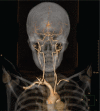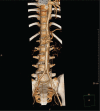Acute myocardial infarction as the first manifestation of Takayasu arteritis: A case report
- PMID: 30985685
- PMCID: PMC6485801
- DOI: 10.1097/MD.0000000000015143
Acute myocardial infarction as the first manifestation of Takayasu arteritis: A case report
Abstract
Rationale: Takayasu arteritis (TA) is a chronic inflammatory disease involving the aorta and its major branches. Initial diagnosis is usually difficult due to the highly variable symptoms. Acute myocardial infarction (AMI) is a very rare presentation in patients with TA. Moreover, the choice of early management for these patients is not well established.
Patient concerns: A 34-year-old woman was taken to the Emergency Department of our hospital, presenting with a sudden onset and persistent retrosternal chest pain radiating to both upper extremities for 2 hours. Blood pressures were different between 2 arms with 151/115 mm Hg on the right arm and 140/100 mm Hg on the left arm.
Diagnoses: The patient was diagnosed with TA according to the medical history, physical examination, and vascular imaging.
Interventions: Primary percutaneous coronary intervention (PPCI) was performed to restore the coronary flow of left anterior descending. Meanwhile, combination of oral glucocorticoids and immunosuppressive agents was administered to halt disease progression of TA.
Outcomes: Chest pain was relieved without rest and exertional angina. The patient achieved long-term remission without symptom relapse during our follow-up.
Lessons: Percutaneous coronary intervention was essential and effective in AMI of TA. Timely immunosuppressive therapy could improve the long-term outcome.
Conflict of interest statement
The authors have no conflicts of interest to disclose.
Figures








References
-
- Soeiro AM, Almeida MC, Torres TA, et al. Clinical characteristics and long-term outcome of patients with acute coronary syndromes and Takayasu arteritis. Rev Port Cardiol 2013;32:297–302. - PubMed
-
- Isobe M. Takayasu arteritis revisited: current diagnosis and treatment. Int J Cardiol 2013;168:3–10. - PubMed
-
- Yokota K, Shimpo M, Iwata T, et al. A case of Takayasu arteritis with repeated coronary artery restenosis after drug-eluting stent implantation successfully treated with a combination of steroids. Intern Med 2012;51:739–43. - PubMed
-
- Endo M, Tomizawa Y, Nishida H, et al. Angiographic findings and surgical treatments of coronary artery involvement in Takayasu arteritis. J Thorac Cardiovasc Surg 2003;125:570–7. - PubMed
Publication types
MeSH terms
LinkOut - more resources
Full Text Sources
Medical

